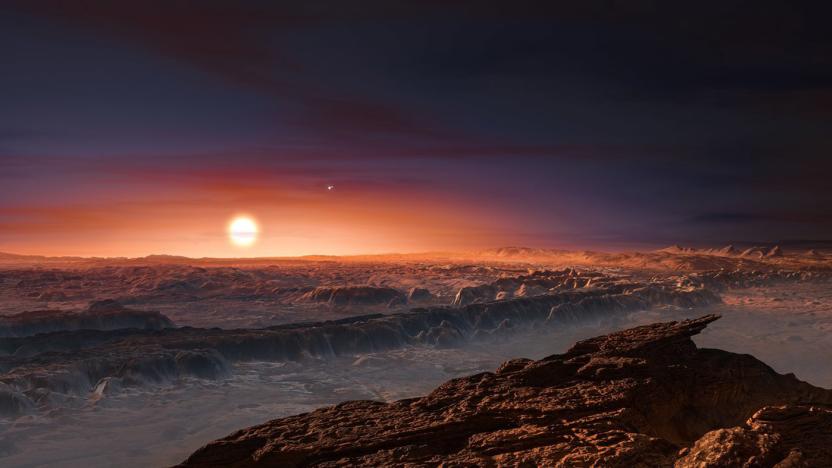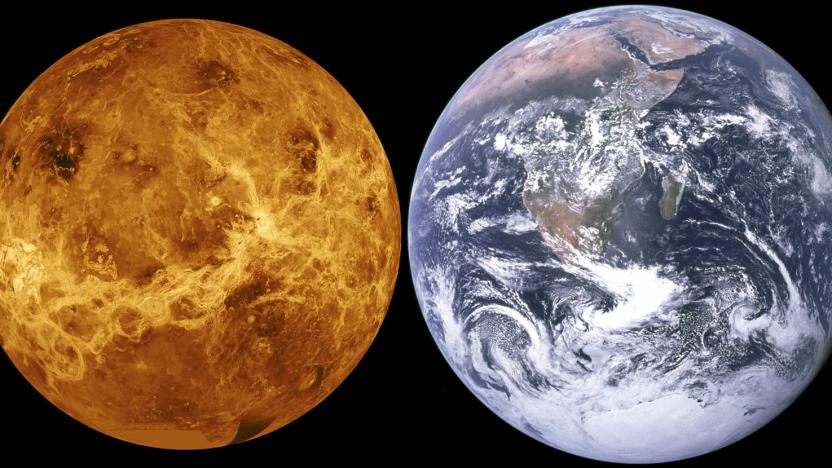Habitable
Latest

Mini-Hubble will scan dim stars to see if they can support life
It doesn't take hugely expensive space telescopes like the Hubble and future James Webb Space Telescope to hunt for habitable exoplanets. NASA and the University of Arizona will launch a small telescope the size of a cereal box called the Star-Planet Activity Research CubeSat, or SPARCS, in 2021. The aim is to find so-called M Dwarfs, stars 20 times dimmer than our sun, and see if they emit too much radiation to support life on other worlds.

Venus may have supported life before Earth
Venus is a hellhole. Despite being much closer to Earth than Mars, its climate is off-the-charts insane, with average temperatures of 864 degrees F, crushing barometric pressure, and did I mention the volcanoes? It's hard to believe that as little as 750 million years ago, it may have had oceans of liquid water and an Earth-like, habitable climate, according to simulations from NASA Goddard Institute researchers. Those conditions may have endured for several billion years, until volcanoes transformed it into its present, hostile state.

Gas planets can become habitable if their stars get grabby
It's tempting to think of gas planets as permanently hostile to life as we know it. A pair of University of Washington researchers beg to differ, however. They've used computer modelling to determine that these worlds can become habitable when their stars get particularly grabby. If a relatively small, solid-core gas planet orbits a class M dwarf, tidal forces can tug it into a habitable zone and not only wipe out the gas (through the dwarf's X-ray and ultraviolet radiation), but produce life-giving water from the core's ice. Provided the timing is right, the result could be downright Earth-like.

NASA details mission to discover whether Europa moon is habitable
With potential oceans flowing below its icy surface, NASA thinks Jupiter's Europa moon is promising candidate to harbor organic life. As such, the space agency and its JPL laboratory are looking to send a lander there within a decade, and have detailed what it wants it to explore in a new paper. Key goals include measuring the organic content of surface and near-surface chemistry, exploring mineralogy, measuring the thickness and salinity of the oceans and ice, imaging surface formations and looking at microscopic ice and non-ice grains. Researchers also looked at potential landing sites, and were torn between a more interesting, active site like "Thera Macula" and a more stable location with ancient geology. NASA's Juno mission, launched in August 2011, is expected to help settle such issues when it probes Europa from orbit starting in 2016. Though it'd be hard to top Curiosity's setdown, a Europa landing could be even more dramatic, considering the moon is over 10 times farther away than Mars and never gets above minus 370 degrees Fahrenheit.

Astronomers find three planets in Gliese 667C's habitable zone
Astronomers have a good day when they detect one planet inside a star system's habitable zone. A mostly European team of researchers must be giddy, then, as it just found three of those ideally located planets around Gliese 667C. The group has combined existing observations from the ESO's Very Large Telescope with new HARPS telescope data to spot the trio of super-Earths, all of which could theoretically support liquid water. As long as the discovery holds up, it may have a big impact on exoplanetary research: it shows both that three super-Earths can exist in one system and that more than one survivable planet can orbit a low-mass star. We can only do so much with the findings when Gliese 667C is 22 light-years away, but it's good to learn that space could be more human-friendly than we once thought.

